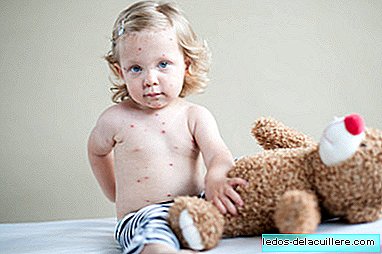
According to the latest World Health Organization report on this contagious disease, 41,000 cases of measles have been recorded in adults and children in the first half of 2018 in Europe, the highest number in the last decade.
Of the 53 countries studied, Ukraine is the most affected, with more than 23,000 cases. In Spain, WHO has accounted for 181 cases in the first six months of 2018.
The figures may seem daunting, since the highest incidence of the disease is high, which was reached last year, when 23,927 cases were recorded. The lowest figure, however, was in 2016, with 5,273 measles patients.
The most attacked country is Ukraine, with more than half of the total cases registered in Europe. Behind, are Serbia (with 4,954), France (2,579), Greece (2,130) and Italy (2,020). They also exceed a thousand infected by this disease, Georgia and the Russian Federation.
In addition, according to the figures provided, in the first six months of 2018, 37 people died from measles in Europe, of which 14 occurred in Serbia. Last year, the number of victims, according to WHO data, was 35.
In this chart shared by the Valencia Medical Association, the incidence by country is seen.
The danger of "anti-vaccines" // t.co/gPR8U6hmOP pic.twitter.com/K2N05CzqVm
- Col Médicos Valencia (@IICOMV) August 21, 2018
In Spain, there is also a small rebound
Although the figure is much lower than in other nearby countries, the records reflect an upward trend of the disease in Spain. In the last months of 2017, measles cases were very scarce: 11 infections in December, one in November and zero in September. However, at the beginning of 2018 they rebounded: 50 cases in March, 49 in April and 41 in May. But we must bear in mind that this disease appears more in spring than in autumn.
According to data from the National Epidemiology Center, in the first half of 2018 the total measles cases counted in 2017 have already been exceeded in Spain, which was 122.
Even so, our vaccination coverage is very high. Last year, WHO granted Spain the accreditation of a measles-free country, although some sporadic outbreaks sometimes occur. It is well above other neighboring countries such as France and Italy, which have had to resort to mandatory vaccination.
How to eradicate measles?

WHO highlights in its statement, where it makes the figures public, that the measles virus is "exceptionally contagious"and spreads quickly.
Zsuzsanna Jakab, responsible for the regional office of the organization for Europe, says that the “dramatic increase”Of this infectious disease and points out that:
"Good health for all begins with immunization, and as long as this disease is not eliminated, we will fail in the Sustainable Development Goals."
The triple viral vaccine is given in children with one year of age to fight measles, rubella and mumps. It is included in the vaccination schedules of all the Autonomous Communities in Spain. From the Spanish Association of Pediatrics, the administration of two doses is recommended, one at 12 months and another as a souvenir between 2 and 4 years of age.
Experts insist on two doses, since contagion problems often appear if the second dose has not been administered.
In addition, remember that if you have been in contact with a person with measles you will have to get vaccinated within 72 hours as a preventive measure.
Children, adolescents and adults who were not vaccinated before the year must also be vaccinated.
And, according to the organization, although the coverage with the vaccine increased in the last year from 88 to 90 percent, there are still large differences between countries: in some of them it reaches 95 percent, and in others it remains below 70 percent either due to lack of health programs or the influence of the anti-vaccine movement.
In some countries, for example, The cause seems to be behind social exclusion and the lack of a national registry for childhood vaccination. In Romania, for example, a large part of the rural or Roma population has great difficulties in accessing the health system, to which we must add the shortage of vaccines that affected the country until the middle of the year 2017. The highest vaccination rate has achieved a decrease in the number of cases in this country, which last year was the most affected by the disease.
Low vaccination coverage also seems to be behind the alarming increase in measles in Ukraine, the European country that has presented the highest number of cases in the first half of 2018: 41 percent in some of the regions with the most cases. Further, Vaccines are only available for children under 17. That is why WHO is insisting that people at risk, such as health workers and people in contact with the sick, get vaccinated.
A very serious disease
Measles is a very contagious disease caused by a virus. It starts with a fever and soon after produces cough, runny nose and redness of the eyes. Then a rash with red dots appears that begins on the head and extends to the rest of the body.
It spreads through the air when an infected person coughs or sneezes. It is so contagious that if a person has the disease, 90 percent of the people around them will also become infected if they are not protected.
There is a fairly widespread belief that it is a benign disease, but it is not so: has complications such as otitis, pneumonia, or the most serious, measles encephalitis, which occurs in one in every thousand patients and can cause very serious sequelae.
If you want more information about the disease or the vaccine, we encourage you to report to the Spanish Association of Pediatrics.
Source | World Health Organization
Photos | iStock












